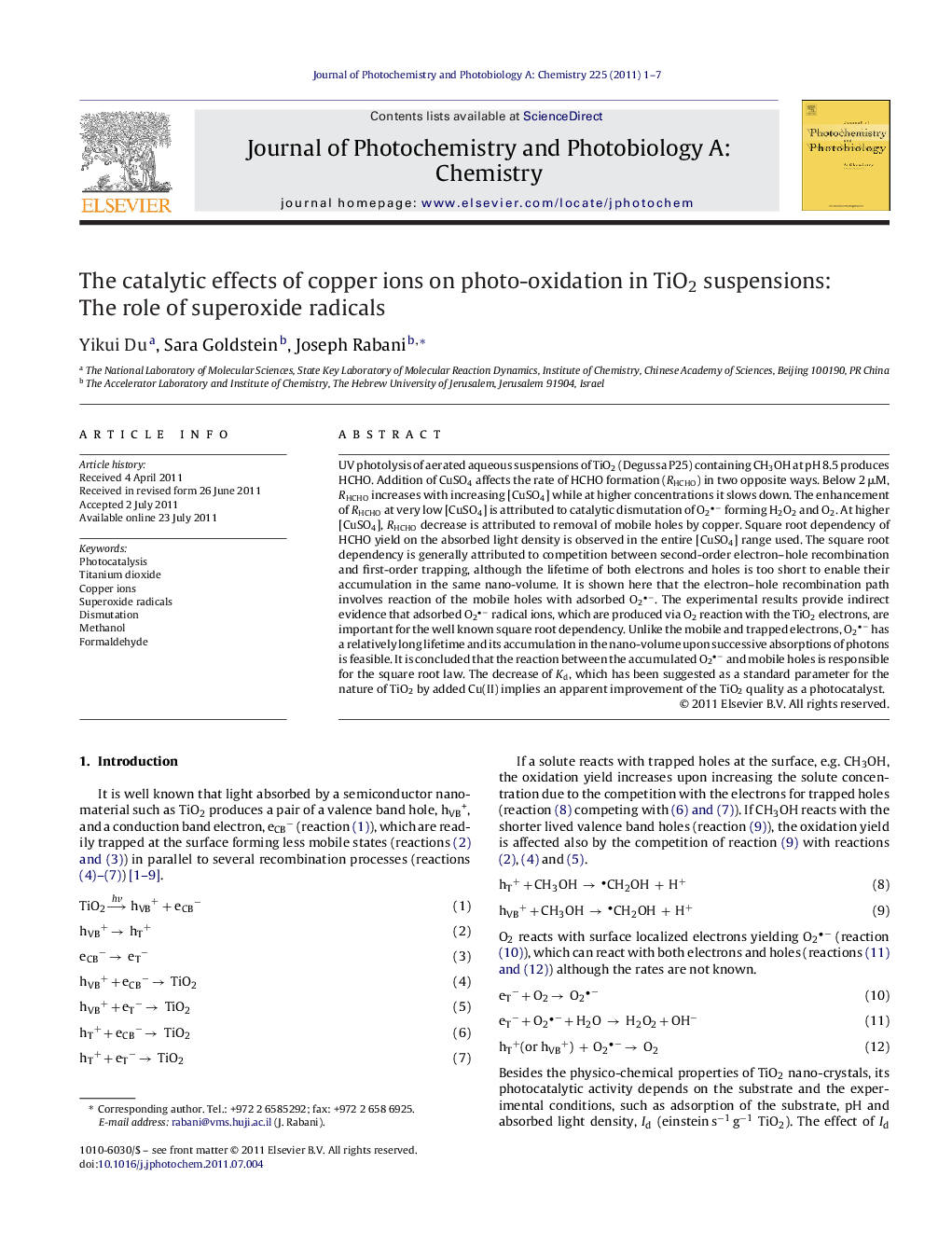| کد مقاله | کد نشریه | سال انتشار | مقاله انگلیسی | نسخه تمام متن |
|---|---|---|---|---|
| 26666 | 43970 | 2011 | 7 صفحه PDF | دانلود رایگان |

UV photolysis of aerated aqueous suspensions of TiO2 (Degussa P25) containing CH3OH at pH 8.5 produces HCHO. Addition of CuSO4 affects the rate of HCHO formation (RHCHO) in two opposite ways. Below 2 μM, RHCHO increases with increasing [CuSO4] while at higher concentrations it slows down. The enhancement of RHCHO at very low [CuSO4] is attributed to catalytic dismutation of O2− forming H2O2 and O2. At higher [CuSO4], RHCHO decrease is attributed to removal of mobile holes by copper. Square root dependency of HCHO yield on the absorbed light density is observed in the entire [CuSO4] range used. The square root dependency is generally attributed to competition between second-order electron–hole recombination and first-order trapping, although the lifetime of both electrons and holes is too short to enable their accumulation in the same nano-volume. It is shown here that the electron–hole recombination path involves reaction of the mobile holes with adsorbed O2−. The experimental results provide indirect evidence that adsorbed O2− radical ions, which are produced via O2 reaction with the TiO2 electrons, are important for the well known square root dependency. Unlike the mobile and trapped electrons, O2− has a relatively long lifetime and its accumulation in the nano-volume upon successive absorptions of photons is feasible. It is concluded that the reaction between the accumulated O2− and mobile holes is responsible for the square root law. The decrease of Kd, which has been suggested as a standard parameter for the nature of TiO2 by added Cu(II) implies an apparent improvement of the TiO2 quality as a photocatalyst.
► Photo-oxidation rates increase with the square root of the absorbed light density.
► Adsorbed superoxide radicals are responsible for the square root dependency.
► Dismutation of adsorbed superoxide is catalyzed by very low Cu(II) concentrations.
► Enhanced removal of superoxide radicals increases the photocatalytic oxidation yield.
Journal: Journal of Photochemistry and Photobiology A: Chemistry - Volume 225, Issue 1, 1 December 2011, Pages 1–7